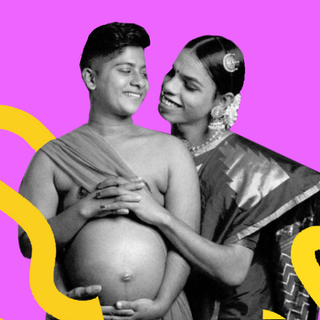
How Does the Law Protect People in Live‑in Relationships?
In light of the rising instances of intimate partner violence, what are the legal protections afforded to those in live-in relationships?

On Tuesday, two incidents of murder were reported, catapulting live-in relationships into the limelight once again. In Delhi, a man, Sahil Gehlot, allegedly killed his partner, Nikki Yadav, and married someone else the same day. Meanwhile, in Maharashtra’s Nalasopara, a similar incident took place where a man, Hardik Shah, allegedly killed his live-in partner Megha Dhansingh Torvi and attempted to flee the site soon after. While both suspects have been arrested, the incidents have reignited the debate on intimate partner violence and women’s safety in live-in relationships, even prompting the chief of the National Commission for Women (NCW), Rekha Sharma, to state, “Girls are not safe in a live-in relationship.”
According to Sharma, a primary reason for the increase in the number of such cases stems from families being unwilling to accept a woman’s choice of partner. “Not only girls but families are also responsible for such incidents. If girls are given the right to select their partners, these types of incidents can decrease,” she said. The gruesome nature of the incidents, which bear an uncanny similarity to the Shraddha Walker case which dominated headlines recently, has also led to a flurry of online posts demonizing live-in relationships. In a society where the institution of marriage is held sacrosanct, these cases are turned into cautionary tales to dissuade women from opting for such relationships. In light of the rising instances of violence against women, what are the legal protections afforded to those in live-in relationships?
The first thing to know is that in India, there is no law that specifically addresses and governs live-in relationships, according to a 2022 Outlook report — but as such, live-in relationships are legal. Back in 2001, the Allahabad High Court observed that living together was an individual choice. Society’s views on such relationships being immoral were not enough to deem them illegal.
In 2006 and 2010, the Supreme Court reiterated this view, noting, “A live-in relationship between two consenting adults of heterogenic sex does not amount to any offense (with the obvious exception of ‘adultery’), even though it may be perceived as immoral.” Since then, adultery, too, has been decriminalized.
The legality of live-in relationships in the country, then, stems from previous judgements and interpretations of Article 21 that guarantees the protection of right to life and personal liberty. “In the context of live-in relationships, Right to Life under Article 21 is applicable in a sense that an individual has the right to live with a person of their interest with or without marriage,” Advocate Debrup Bhattacharyya told Outlook.
Related on The Swaddle:
The ‘Delhi Murder’ Isn’t a Cautionary Tale. Why Does the Media Turn It Into One?
The “omission of live-in relationships in family legislation” can be viewed from two angles, Rohit Ray wrote in LiveLaw. First, the lack of legal recognition means there are “no statutorily born rights that couples can derive from these relationships.” On the other hand, this also gives individuals in live-in relationships more freedom to decide their own terms.
In some instances, protections boil down to the contours of the live-in relationship – specifically, on the question of whether they’re similar to marriages. In 2010, in Velusamy Vs D Patchaimal the SC had laid out criteria for live-in relationships to come under “relationship in the nature of marriage” and be deemed valid. These included: The couple must hold themselves out to society as being akin to spouses; They must be of legal age to marry; They must be otherwise qualified to enter into a legal marriage, including being unmarried; They must have voluntarily cohabited and held themselves out to the world as being akin to spouses for a significant period of time. In cases where one of the partners is married, however, protections aren’t as easily applicable, as it violates the clause of relationships having to be “in the nature of marriage.”
However, there are certain legal protections in place for women who might face abuse or abandonment by their partners.
To protect women in live-in relationships from abuse, the Supreme Court, in 2013, included live-in relationships under the ambit of “domestic relationships” defined in the Protection of Women from Domestic Violence (PWDV) Act. Section 2(f) of the Act applies not only to a married couple, but also to a “relationship in nature of marriage.” This allowed women in live-in relationships to seek recourse for physical, mental, verbal and economic abuse.
The Act defines a “domestic relationship” as a “relationship between two persons who live or have, at any point of time, lived together in a shared household, when they are related by consanguinity, marriage, or through a relationship in the nature of marriage, adoption or are family members living together as a joint family”.
In 2013, the Supreme Court further categorized live-in relationships into two – cohabitation between two unmarried individuals, which has been recognized, and a relationship between an unmarried and married individual or between two married individuals, which has been deemed illegal in the past by High Courts of Bombay, Allahabad and Rajasthan, noted The Week. Despite the decriminalization of adultery, however, women in relationships with married men have been denied protection from domestic violence by some courts – though the Delhi High Court upheld a woman’s right to protection irrespective of her partner’s marital status.
Further, just as a wife can claim maintenance from her partner under Section 125 of the Code of Criminal Procedure (CrPC), so too can a woman in a live-in relationship. This came after a 2009 recommendation by the Malimath Committee to change the definition of ‘wife’ under Section 125 CrPC to include women who have been in live-in relationships for a long time. Though the amendment wasn’t incorporated in the Section, a consequent Supreme Court judgment reflected this recommendation – the ruling observed that a woman was equally entitled to maintenance, noted Bar and Bench.
Related on The Swaddle:
Live‑in Relationships Are Similar to Marriages, Just Not Universally Accepted: Punjab & Haryana HC
Even children born to partners in a live-in relationship will be considered legitimate, and can claim maintenance, so long as either of the partners are not legally married to someone else. This is based on law presuming that such relationships are akin to marriage. “Long course of living together between a male and female will raise a presumption of marriage between them and the children born in such relationship are considered to be legitimate children,” reads the SC judgment in a 2022 case.
Since personal laws do not recognize live-in relationships, the country’s succession laws do not entitle individuals to inherit their partner’s property. However, several judicial rulings have provided for this, allowing individuals in live-in relationships to inherit the individual property of their partners, but not their ancestral property, LiveLaw noted. Children born out of these relationships, too, are entitled to the self-acquired property of their parents.
As such, live-in relationships in India are being governed through interpretations of law, rather than legislation that singularly addresses various aspects of these relationships. This is further complicated when it comes to same-sex relationships. The Odisha High Court allowed a transgender man and woman to continue in a live-in relationship in 2020, noting that “[L]ove knows no bounds has expanded its bounds to include same sex relationships… The freedom of choice is therefore available to the two individuals in this case who have decided to have a relationship and live together and society should support their decision.”
However, contradictory rulings exist that leave questions of alimony, protection from abuse, and children’s legitimacy unanswered for same-sex partners, noted Outlook. Meanwhile, social stigma and families’ aversion to live-in relationships leaves individuals, especially women, alienated, without support, and vulnerable to exploitation. As Waheed Alam, Assistant Professor at Shia PG College, Lucknow told Outlook, “There is a need to bring legislation on the subject so that there is clarity and courts don’t bring conflicting rulings.”
Ananya Singh is a Senior Staff Writer at TheSwaddle. She has previously worked as a journalist, researcher and copy editor. Her work explores the intersection of environment, gender and health, with a focus on social and climate justice.
Related


Zahad and Ziya’s Child Can Change How We Talk About Gender In India
